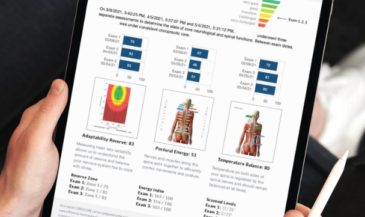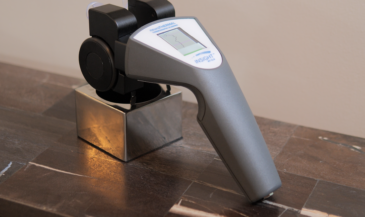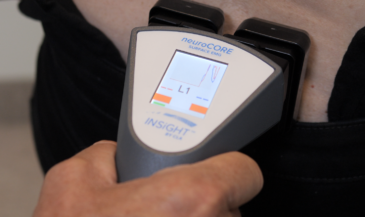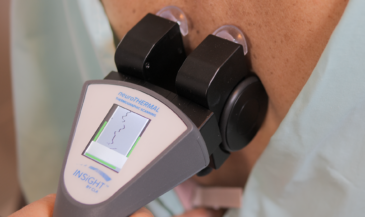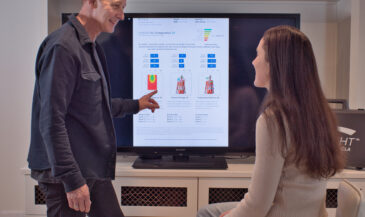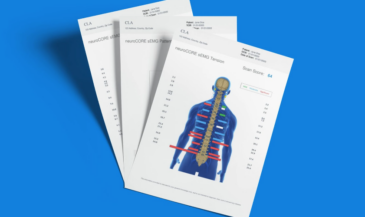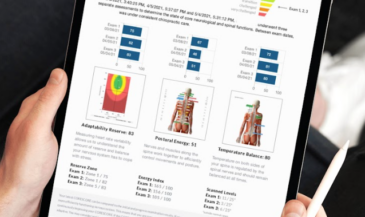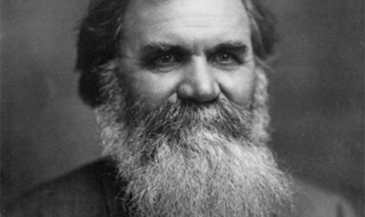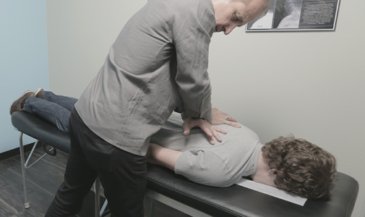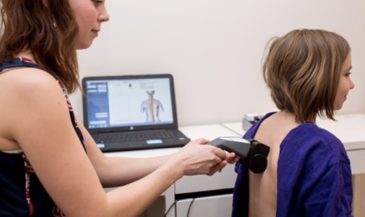An open letter to the VA Committee by Dr. Christopher Kent, President, Council on Chiropractic Practice
Many chiropractors today face challenges in their quest to realize the vision of worldwide leadership of health care with the chiropractic model. Some assume leadership roles, where they are afforded an opportunity to make a difference.
Yet, the challenges we face today pale compared to those who went before us. Consider those courageous chiropractors that went to jail rather than abandon their goals and moral values.
The first chiropractor to be incarcerated for practicing medicine without a license was the discoverer, D.D. Palmer. A 1906 newspaper article [1] chronicles an interview with D.D. at the Scott County Jail, where he was confined in a cell 8×11 feet. The Court offered him the alternative of paying a fine. D.D. chose jail, stating, “After I went to jail, several parties phoned to my home and others called offering to lend me money with which to pay my fine. I am not in cell for lack of princiPAL but for an abundance of princiPLE.”
The resolve of the discoverer becomes clear when the interviewer writes, “Dr. Palmer states he is treated well by all the jail officials and has no complaint to make. ‘Only one thing I would like to do which they will not allow me,’ stated the doctor, ‘is to hang out my sign over the window to my cell.’”
Other early chiropractors did not fare as well while serving time, and the sentences were sometimes harsh. Callender noted that, “In 1923, B.F. Lear and W.E. Quartier were fined $500 or 833 days in jail, the maximum sentence for a first offense. They chose the Trumbull county jail in Warren, Ohio.” [2] If you do the math, that’s more than two years.
Jail life could be severe. Another chiropractor, W.D. Adrian, was sentenced to 500 days. Portions of a letter from Morgan County Jail reads, “…We see an occasional rat, but all the bugs apparently were killed last summer in a big raid on the jail. I could stand some springs or a mattress on the bars I sleep on, but outside of this and the disagreeable dispositions of some of the prisoners, I am getting along nicely.” [3]
The 1923 Palmer Lyceum was dedicated to those who served jail time for chiropractic. Callender quotes Mac Searby, “It takes a real man, a real woman to go to jail. Some are parted from their families; little baby fingers and arms and lips are far away when bedtime comes. Mother is worrying. Sunshine is nowhere behind the bars except in the hearts of these boys and girls, and the least of their worries is that their business is all shot to pieces. They have cut themselves off from every tie, every support that the free man has, and they have gone back to the cells again when the test came a second time.” [2]
Some paid the ultimate price. Consider the following obituary: “Dr. Albert Ivnik, chiropractor, Cleveland, Ohio, died yesterday at seven p.m. He never recovered from the effects of the exposure at Warrensville Workhouse, and has been in bed from time to time since resuming his practice in February, and finally passed away last night. He leaves a wife and…four children.” [4]
Thankfully, we are not asked to give our lives for chiropractic. Our leaders and representatives, however, are expected to act heroically in defending the profession, and those it serves.
It is not always easy to behave heroically. It is far easier to blend in with the status quoto not rock the boatto trade shortterm expediency for a greater vision.
Consider what impact one courageous person can accomplish. When Rosa Parks refused to give up her seat to a white man on a bus in 1955, she changed the course of history. How easy it would have been for her to be a “good Negro” who “fit in” and accepted things as they’d been done in the past, regardless of how insulting, and without consideration for the future.
As a member of the Chiropractic Advisory Committee for the VA, you were entrusted with the responsibility of recommending policy that could profoundly affect the future of the chiropractic profession, and the lives of millions of American veterans.
It was no surprise that there was disagreement regarding some issues. However, direct access to chiropractic care is one issue I was sure all chiropractors would agree upon. After all, by statute, custom, and policy, patients in all fifty states have direct access to doctors of chiropractic.
Furthermore, according to CCE, “As a gatekeeper for direct access to the health delivery system, the doctor of chiropractic’s responsibilities as a primary care physician include wellness promotion, health assessment, diagnosis and the chiropractic management of the patient’s health care needs. When indicated, the doctor of chiropractic consults with, comanages, or refers to other health care providers.” [5]
Given this, I was flabbergasted upon learning that you had voted with Dr. DuVall to limit Veteran’s access to chiropractic services. The notion that veterans, with very few exceptions, will have to be referred by a Primary Care Physician or other person treating the patient, is likely the most devastating and outrageous notion I have encountered in my 30 years as a chiropractor.
In addition to the problem of bias described in the VA report (Page 11, lines 2934), a more significant issue is whether a primary care physician (or other provider) has the education, training, and clinical skills to determine the safety and appropriateness of chiropractic care.
A search of medical school curricula failed to disclose any US medical school that provides training in chiropractic analysis for vertebral subluxation. Similarly, such training does not appear to be part of the residency programs completed by primary care physicians, or other persons providing primary care.
On page 6, lines 1920 of Draft #6, the Committee acknowledges, “‘Subluxation complex’ or ‘vertebral subluxation complex (VSC)’ are terms specific to chiropractic.”
Even in the realm of musculoskeletal medicine, absent subluxation issues, a recent study in the Journal of Bone and Joint Surgery [6] concluded: “Current medical school training in musculoskeletal medicine is inadequate.”
The average score of the 85 residents tested was 59.6% (73% was considered passing); the highest score was 86%; the lowest 35%. Only 19 residents earned a passing grade; 70 (82%) “failed to demonstrate basic competency.”
The authors concluded:
“The current study clearly documents the inadequacy of medical school education with regard to musculoskeletal medicine. The duration of the residents’ preparation in this area was inadequate. For the study population as a whole, the mean duration of instruction in orthopaedics was only 2.1 weeks. In addition, 28 residents (33%) had graduated from medical school with no rotation, required or elective, in orthopedic surgery; these residents had the lowest mean score (55.9%) on the examination and the highest rate of failure (93%).
Given the absence of training in determining the safety and appropriateness of chiropractic care by primary care providers, protocols should be designed that permit direct access to chiropractic providers.
Contrary to the suggestion of the Committee (Page 9, lines 3739), a primary care provider, with few exceptions, lacks the education, training, and experience to determine indications and contraindications to chiropractic care.
It is important to note that chiropractic adjusting procedures are not limited to highvelocity, lowamplitude thrust (HVLA) procedures. Reflex, lowforce, and tonal techniques are also available, many of which may be safely applied in circumstances where HVLA techniques may be inappropriate.
Primary care physician and nonphysician primary care providers are generally not familiar with these procedures, and could become barriers to the provision of chiropractic care.
While direct access may be at variance with the current VA model, it could be accommodated. An eligible veteran requesting chiropractic evaluation would be seen by a doctor of chiropractic, who would report the findings, recommendations, and chiropractic care plan to the primary care provider.
This would not preclude referrals from other providers; nor need it result in isolation of the chiropractic department. Doctors of chiropractic would still participate as team members.
I have heard the excuses proffered by some of you. For example, “In the initial discussions all the DCs argued strongly for a ‘direct access’ recommendation. It was clearly pointed out by the members of the Committee working in the VA system that were such to happen, the entire system would be so disrupted that the DC would be looked upon as a nonteam player and would become so marginalized that they would probably fail to function within the system.”
Nonsense! Congress MANDATED care for subluxation complex and neuromusculoskeletal conditions. It was CONGRESS that asked for recommendations concerning direct access. Do you believe, for one moment, that VA physicians such as Dr. Shekelle and Dr. Holohan would competently screen for vertebral subluxations, and refer subluxated patients to chiropractors?
The only possible explanation for your behavior, other than a lack of fortitude, is the “Stockholm Syndrome.” According to one description, “The term, Stockholm Syndrome, was coined in the early 70s to describe the puzzling reactions of four bank employees to their captor. On August 23, 1973, three women and one man were taken hostage in one of the largest banks in Stockholm. They were held for six days by two exconvicts who threatened their lives but also showed them kindness. To the world’s surprise, all of the hostages strongly resisted the government’s efforts to rescue them and were quite eager to defend their captors. Indeed, several months after the hostages were saved by the police, they still had warm feelings for the men who threatened their lives.” [7]
Psychologists have determined that similar behavior is seen in other oppressed individuals and groups. While your lives were not threatened, the life of your profession certainly was. Astoundingly, the Department of Defense debacle was cited as a successful model to be copied in the VA.
The Department of Defense statute does not mention subluxation complex. It is clear that with few exceptions, a medical referral model is used. If chiropractic by medical referral only is characteristic of success, I cannot imagine what you would consider a failure. Note carefully that “neuro” has been stripped from “neuromusculoskeletal.”
According to a newspaper account quoting Lieutenant Colonel Dr. Robert Manaker “Several of the sites employ a “patient choice” model, which gives patients the option of seeing a traditional provider or chiropractor directly for musculoskeletal complaints. However, most sites still utilize a referral system, in which the medical doctor makes an initial diagnosis and then refers the patient to a chiropractor for additional care.” [8]
At a time when the physical therapy profession has revealed a plan to issue first professional doctorates, has achieved direct access in most jurisdictions, and even has the hubris to suggest that they correct subluxations, I cannot believe that you would position chiropractors as referralonly providers in the VA. [9]
No amount of “spin,” rationalization, unsubstantiated speculation, or backpedaling can change the facts. Your vote is recorded.
Your current position contradicts CCE standards, state law, public policy, and over a century of professional practice. As Dr. Edwards stated, “it’s not about us — it’s about veterans!” [10] You have erected a formidable barrier to chiropractic access, and effectively gutted the subluxation provision of the statute. This is contrary to the intent of Congress.
Please do not allow yourselves to be remembered as the DCs who set the stage for chiropractic to deteriorate into a lowertier, referral only profession. Do not set this dangerous precedent. Do not force those DCs who favor direct access to lobby Secretary Principi to ignore your recommendations.
Unlike Rosa Parks, D.D. Palmer, and countless others, I am, not asking you to risk incarceration. I am merely asking you to join Drs. Fisher and McClean in recommending direct access to Secretary Principi. We don’t want to be relegated to the back of the bus. If you cannot stand tall and do what is necessary to derail this provision, kindly resign and make room for someone who will.
References
1. Dr. D.D. Palmer talks in jail. Davenport Democrat 4/2/06.
2. Callender A: “Buckeye chiropractic: turbulence in a limited branch of medicine, 19151975.” Chiropractic History 1995;15(2):7989.
3. Fountain Head News 1923;13(7):6. Quoted in Callender (2).
4. Fountain Head News 1923;12(46):1. Quoted in Callender (2).
5. www.cceusa.org/#Da
6. Freedman KB, Bernstein J. The adequacy of medical school education in musculoskeletal medicine. J Bone and Joint Surg, 80A:14211427. Oct. 1998
7. http://web2.iadfw.net/ktrig246/out_of_cave/sss.html
8. www.chiroweb.com/archives/21/02/02.html (DoD)
9. www.apta.org
10. www.chiroweb.com/columnist/edwards/index.html









































